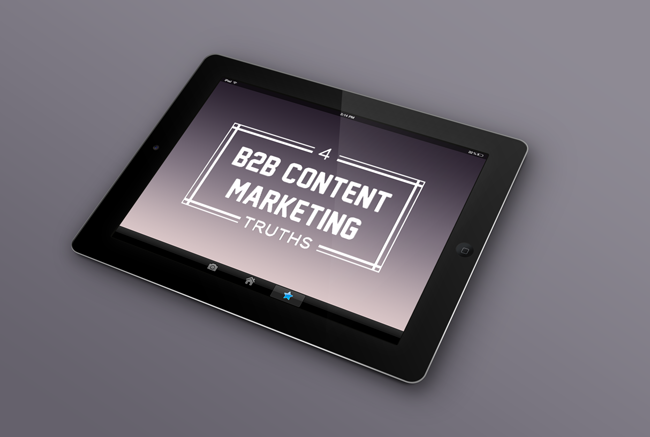A survey conducted by the Content Marketing Institute identifies content marketing as one of, if not the most important tool for lead generation. On average, B2B marketers use 16 content marketing tactics to share their messaging. Content creation, the lifeblood of content marketing, can be very difficult without a roadmap to long-term content success.
1.) Today’s B2B buyers are acting as their own salespeople. Thanks to the online world of web content, social media, product reviews etc., the B2B buyer has access to powerful, informative outlets of information. With access to these seemingly unlimited resources, customers are essentially guiding themselves through the buying process. Consequently, these knowledgeable customers easily see through promotional pitches and half-truths, and in the age of information overload, they instantly disregard bland or irrelevant content. So how can you integrate relevancy back into your content marketing? One way is through personalization. Although you may not admit it, your name is one of your favorite words, and your clients and prospects feel the same way. Address your audience by their first name whenever sending them product or brand information. Depending on your email/marketing automation tool, you can take personalization a step further than first name by personalizing based on purchase history, gender, geography, company, etc.
2.) Marketers need to provide different content structured for varying stages of the customer lifecycle. Consider this, you wouldn’t talk to your best friend the same way you would with someone you just met. So why do many marketers distribute the same content to their entire audience with the same messaging? Depending on their stage in the customer lifecycle, prospects and current customers alike should be receiving tailored information. For instance, brand loyal clients and long-term customers desire content specific to their use case, or more technical articles regarding the use of your product. On the other hand, prospects should be receiving thought leadership and communications designed to increase awareness.
3.) There is nothing wrong with recycling your old content. Myth: marketers must constantly be creating content that is 100% unique and new. Do you have old fliers, posters, emails, or brochures lying around? Transfer those items into digital content. What about an eBook or whitepaper that was published a few years ago? Chances are these older materials can be repurposed and/or updated to produce a new blog series or additional marketing materials. Reclaiming your old content is a great way to be both time and cost efficient.
4.) Content marketing is not a one-dimensional exercise. Webinars, videos, blogs, infographics – there are countless formats and ways in which your content can be delivered. Marketers can and should take advantage of multiple delivery methods by deriving numerous uses from a single piece of content. For instance, a promotional video can double as a call-to-action, and the transcript of the video can be morphed into a blog or blog series. This ensures consistency in messaging across channels, while simultaneously catering to the different formats and manners in which content is consumed.
Content marketing is neither an art nor a science. Remember these basics as you plan your content marketing strategy: (1) consumers are more educated than ever, (2) prospects/clients should be provided with proper content that reflects where they stand within their customer lifecycle, (3) content creation means a lengthy process to create something brand new and (4) content marketing must be multi-dimensional to achieve the greatest amount of reach possible. If you keep this tips in mind, content marketing will be easier and more efficient for your company in no time!


Pingback: How to Create the Best Content | Right On Interactive